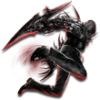Hello GDNet
For about 2 months now i have been actively developing an editor for my game project.
The reason i took the challenge to shift from my project and actually build an engine and an editor for my game is purely for learning purposes, and i have learned a lot.
At first i was focused on getting things done but now i'm enjoying the process of creating my own game engine architecture and tools.
I know its too early to get excited as my game engine lacks on many things, but i'm happy to see what i have accomplished so far.
Currently i have the following problems to solve:
- How to implement the Redo and Undo algorithms ?
- How to save the map, in what format and structure ?
- How to select faces, vertices, and transform them around ?
While i was developing the editor i was highly motivated by Unity, Valve Hammer Editor and Frictional Games HPL Editor.
I'm a one man studio and i like when people throw ideas and suggestions at you, it keeps me motivated.
Here is a preview at what i have accomplished so far










